Of all the creepy crawlers in your home or apartment, one of the most hated is the spider. Between superstitions, misinformation, and health concerns, finding a spider is generally the last thing you want. However, spiders aren’t nearly as bad as their reputation and can actually be beneficial.
Let’s take a look at what spiders are, why they invade your home, why you might want to get rid of spiders, and why you may wish to keep them around. Then we’ll look at some methods of dealing with these small hunters.
Getting to Know Spiders
Spiders belong to the Araneae order of arachnid. Not only are they the seventh largest order out of all organisms (over 40,000 known species!), but spider populations can be found everywhere except Antarctica. They’ve even been to space!
Even if you have arachnophobia (the fear of spiders, one of the most common pest phobias), it’s important to understand these amazing critters. Let’s take a deeper look. You might be surprised at how varied spiders can be.
Identifying Spiders
Contrary to popular belief, not all spiders create webs. Those that do create different kinds of webs, depending upon the species. Cobwebs and spider webs actually have different chemical compositions, for example. Spider mites, a relative of spiders, can also make webs. Meanwhile, some species, such as wolf spiders, don’t make webs.
As a result, spotting what looks like a spider web doesn’t mean you’ve found a spider. Likewise, failing to spot a web doesn’t mean you don’t have one living rent-free in your home.
In particular, nine species of spiders have adapted well to living in the average US home, although others are known to also wander in.
Related: What Does Spider Poop Look Like?
Habitat
Spiders live in just about every habitat you can think of, unless it’s too cold. But they also have preferences.
For example, one fun fact about wolf spiders is that they don’t like heights. Other spiders prefer to get high up in the trees or even walk on water.
The key to a spider’s heart is a place with shelter, warmth, and food. Human homes are especially attractive in winter, and arachnids love quiet places such as the attic, basement, or behind walls. Anything beyond that is just icing on the cake.
Basic Biology
Spiders are a type of arachnid with some very specific features that set them apart from both insects and other arachnids. The most obvious feature is their eight legs, which sets them apart from insects.
Also, unlike other arachnids (such as scorpions) or insects, spiders have a two-segmented body instead of one or three (or more). Their mouths have two fangs mounted on chelicerae (or pedipalps) capable of injecting venom into their victims.
Different Webs for Different Spiders
There are a lot of different uses for webbing out there. Some spiders use them to create trapdoors over their dens. Some create funnels to hide in. A large number of spider species weave intricate and geometric nets to capture flying prey.
Cobweb spiders produce messy masses of webbing often used in folk medicine. And a couple very large spiders even use their webs to capture supervillains.
What Do Spiders Eat?
Spiders are strictly predators – or so we thought. Most hate eating plants even more than the average four year old and have fewer teeth than grandma when she’s out of Fixodent.
As a result, spiders either pounce upon their prey (including: flies, ants, springtails, mosquitoes, bees, love bugs, and others. They’ll even eat roaches.) or trap them in webs, then inject a venom that liquifies the innards so the arachnid can drink a predigested meal.
But there’s always an exception to every rule. In 1896, a the male of a new species (Bagheera kiplingi) was described. In 1996, the female was finally also described.
It didn’t take long for scientists to discover this species of jumping spider feeds on nectar and tiny buds on the acacia tree. You heard right, Bagheera kiplingi is a herbivore! Only on rare occasions do they snack on ant larvae or resort to cannibalism.
Venomous Spiders
There are only two known venomous spiders in the US: black widow spiders and the brown recluse spider. This number has decreased in recent years from four as scientists and medical professionals have conducted tests on species believed to be deadly.
The hobo spider is one of the most misaligned species, having only recently been removed from both the Mayo Clinic and CDC lists of dangerous spiders. The change was made after numerous laboratory tests were conducted that verified there was no necrosis (death of surrounding tissue) or toxic effects caused by hobo spider bites.
The other victim of the blame game is the yellow sac spider, which was also blamed for necrotic wounds. In 2006, a report published by The American Society of Tropical Medicine and Hygiene concluded that there was no evidence that these spiders were dangerous to humans in any way and they were removed from lists of dangerous critters worldwide.
Benefits of Spiders
Spiders, like the Earth, are mostly harmless. In fact, these little critters are an essential companion for getting rid of insects that try to invade your home or garden. This includes many plant pests or common nasties such as sugar ants, ghost ants, or roaches.
The Downside to Spiders
Most spider species aren’t venomous, but they can still cause an allergic reaction if they bite. While most are shy, no spider likes to be cornered and will generally defend themselves.
More importantly, a spider infestation is a sign of larger problems, as the arachnid squatters will only move in if you have plenty for them to eat.
See Also: How to Get Rid of Tiny Spiders in Your Christmas Tree
Critters Commonly Mistaken for Spiders
Spiders all belong to the order Araneae and are part of a much larger arachnid community that includes mites, scorpions, and ticks. As a result, they are sometimes confused with similar species. Here are two imposters you’re likely to run into.
Daddy Long-Legs
Sometimes referred to as harvestmen, the daddy long-legs is an arachnid from the order Opiliones. It has eight very long legs and behaves very similar to a spider.
However, these critters have only one body segment and do not produce venom. Likewise, they cannot create webs and are often prey for actual spiders.
Even if you can’t get a good look, you’ll know when you’re chasing a daddy long-legs because it can eject one or more legs to escape a predator’s grasp and may also curl up and pretend to be dead. They only have two eyes and rely mostly on their legs to sense the world around them.
It should be noted that the common cellar spider is an actual spider that often bears the nickname daddy long-legs. However, it has a very distinct two-segment spider body with a long, thin abdomen.
Spider Mites
Another arachnid that isn’t a spider, spider mites are a subgroup of mites that commonly infest houseplants. These destructive critters prefer sucking the blood out of plants, rather than bugs.
Despite looking nothing like a spider, they have the ability to produce webs, which they use to protect their egg sacs. This often leaves (no pun intended) plant owners to believe actual spiders have taken up residence in their plants.
Related: How to Get Rid of Clover Mites
How to Get Rid of Spiders
Chances are, if you have spiders late in the year, you also have egg sacs stashed about the home. As a result, elimination can be a bit more complicated than a rolled up newspaper or shooing one of these critters out the door.
The warmer interior temperatures mean spider activity can last long past the normal spider season. Even worse, spider eggs are known to hatch early when indoors, releasing hundreds of baby spiders.
While the majority of spider species won’t wander indoors, some can easily become household pests. The good news is there are many ways to eliminate them indoors, as well as to control an outdoor population.
From Your Home
There are a lot of quick and easy methods for killing spiders on sight in your home. The vacuum can be one of your deadliest tools, sucking up spiders, eggs, and webbing alike. Or you can just smack them with a shoe, newspaper, or other random object. Once you spot some spiders in the house, they’re fair game.
Spider Catchers
Glue traps can do wonders. Many are designed to be enclosed to reduce the risk of kids and pets getting stuck. One of the best out there is a glue board by Tomcat. Try to avoid the current traps by Terro, as they no longer provide full glue coverage on their boards.
Another great option is to purchase a carnivorous plant. These work best against fruit flies and other tiny unwanted pests, but smaller spiders can also become a meal if they aren’t careful.
Kill Spiders on Contact
Contact sprays may not be the best way to kill spiders you can’t see, but they can work wonders against any spider that failed ninja academy. There are plenty of chemical options out there, such as Raid or Hot Shot, but also some eco-friendly solutions, such as Nature-Cide to choose from.
You can also go the DIY route by adding 20 drops of peppermint essential oil or eucalyptus oil to a 32oz spray bottle of water. Squirt it anywhere spiders might try to hide. Spiders hate these oils and there are claims a direct hit can even kill them. This is an easy way to get rid of spiders naturally and may well be the best spider repellent while sleeping.
Finally, our old friend diatomaceous earth will kill spiders without posing a threat to family or pets. Be sure to choose food grade when picking some up. Best of all, it can be used to protect your houseplants and garden as well.
See Also: Does Diatomaceous Earth Kill Black Widows?
From Your Garage or Toolshed
The same rules for your home apply to the garage or toolshed. However, you have a few additional options if children and pets don’t have easy access.
One of the better options, alone or in tandem with glue boards, is to use a residual spray. These chemical killers not only slay on contact, but leave a residue which continues to kill any bugs unlucky enough to step in it. One of the best is Miss Muffet’s Revenge.
Some products, such as those by Terro, are water-based due to California laws and will only stun spiders for a brief period. Be sure to check labels and choose a product that states it will work on spiders on the label.
See Also: How to Get Flies Out of Your Garage
From the Garden
Homemade peppermint oil sprays and diatomaceous earth are your two best friends when it comes to protecting your garden. Avoid leaving outdoor lights on when not necessary.
Alternatively, you can add plants that attract insectivore birds or other bug-eating critters. Alliums, peppermint, and other plants with strong scents will chase away even more potential food sources.
These tricks will not only reduce the spider’s food supply, they’ll often snack on the spiders as well. When outside, natural predation is easily the best spider killer out there.
From Places You Plan to Be
Essential oil sprays (such as lavender oil or eucalyptus oil) are hands down the best choices for using in your bed or on furniture. They also work great in your car without harming vinyl or leather surfaces.
Best of all, you can make various cocktails to combat an even larger selection of critters such as bedbugs while making your bathroom, bedroom, or living room smell amazing.
You can also make good use of salt. Whether you ping them with our staff favorite, the Bug-A-Salt, or make a saline spray, salt is actually poisonous to spiders.
Finally, vinegar is another useful, natural spider repellent that you might have used to clean up cat urine or keep for cleaning. They hate the smell of this common household item, and a 50/50 blend of white vinegar and water makes for an excellent spray.
How to Deter Spiders
Regardless of whether you currently have spiders, it’s best to make your home unattractive to them. The good news is that spider-proofing your home will also bug-proof it.
In the event you’ve noticed a spider hanging around, these steps will help ensure you don’t miss any while on your arachnid murder spree.
- Seal It – Make sure the doors and windows are weatherproofed and well-caulked. Also seal any tiny cracks in walls and baseboards. These cracks are both entry points and easy hiding spots. If you can slip paper in there, a spider can probably fit as well.
- Clear It – Clean up any clutter around the house. Spiders like to hide, so cleaning will make them feel unwelcome. Additionally, ensuring there’s no spilled food or leaky faucets will deter bugs from moving in, which in turn removes the potential spider buffet.
- Kill It – Do you already have a bug problem? Waiting to get rid of bugs is like waiting until Tuesday after giving Wimpy a hamburger today. Try to eliminate these unwanted guests or hire a pest control specialist before they can attract spiders.
- How to Get Rid of Hawks - March 8, 2024
- How to Get Rid of Pill Bugs (Rolly Pollies) - March 1, 2024
- How to Get Rid of Groundhogs (Woodchucks) - February 5, 2024

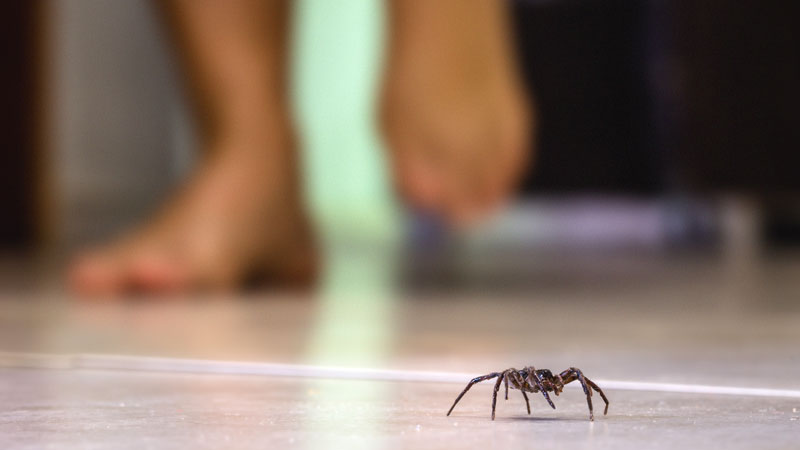
 Just tell me how to get rid of ’em.
Just tell me how to get rid of ’em.
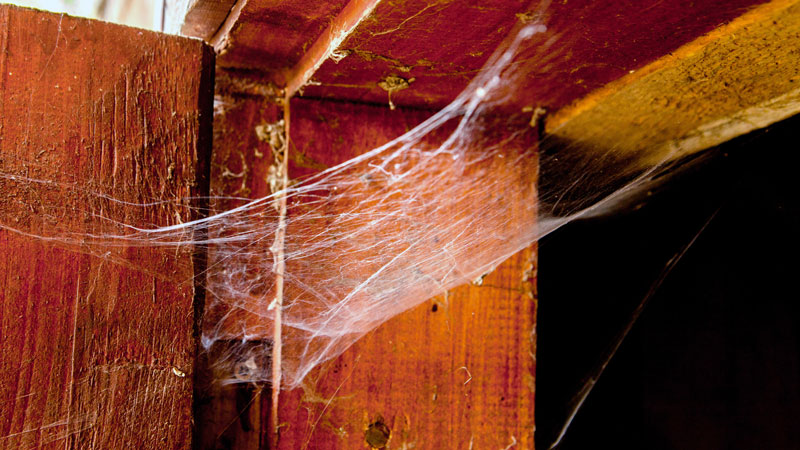
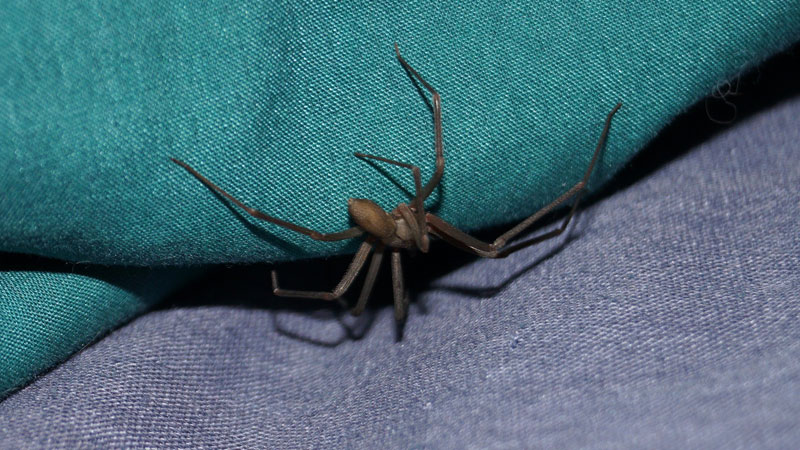
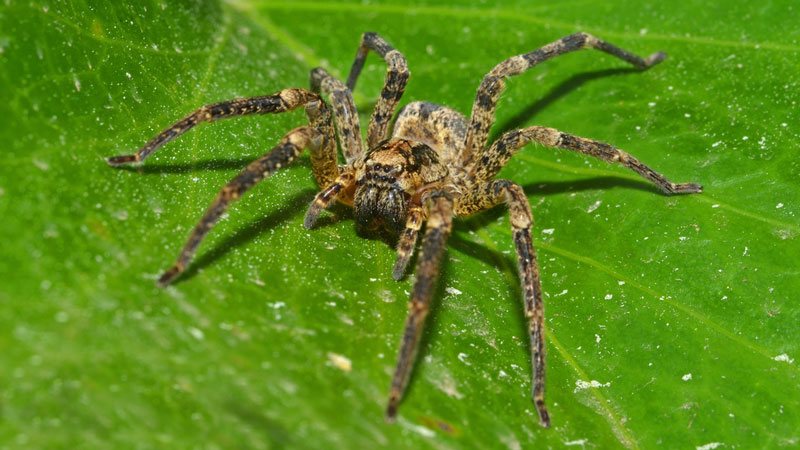
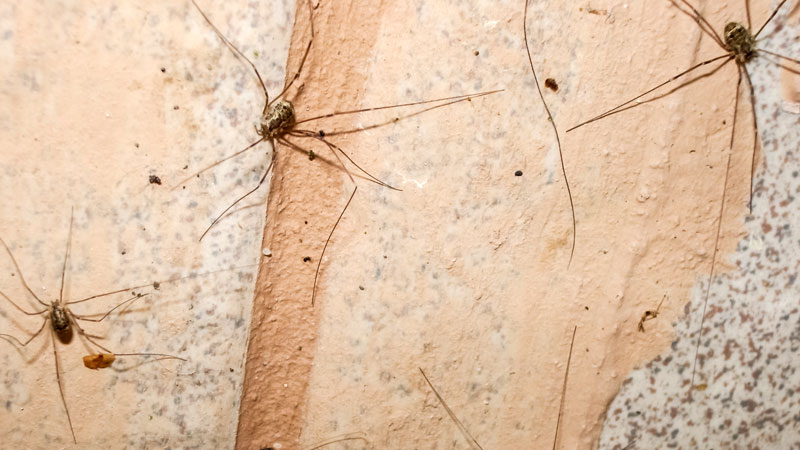

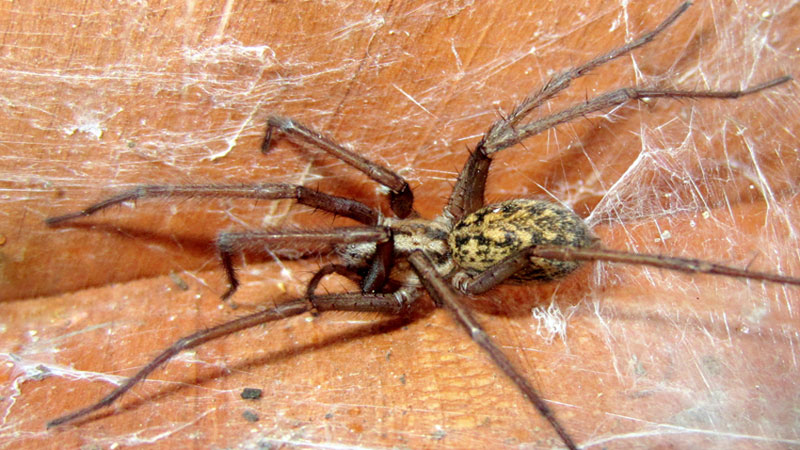
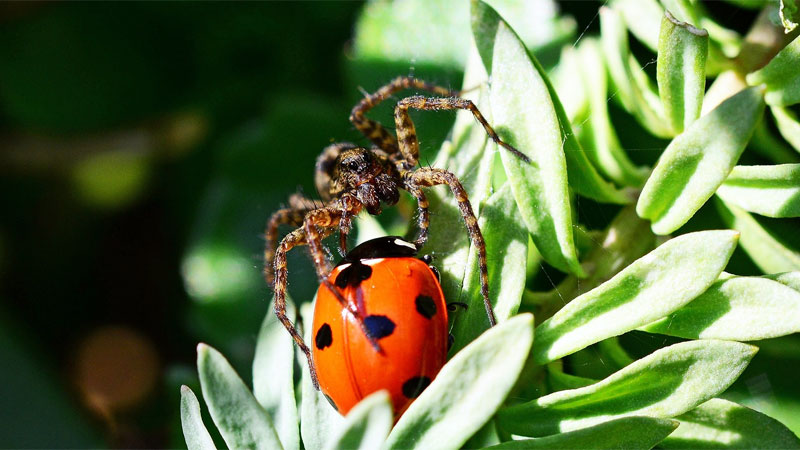
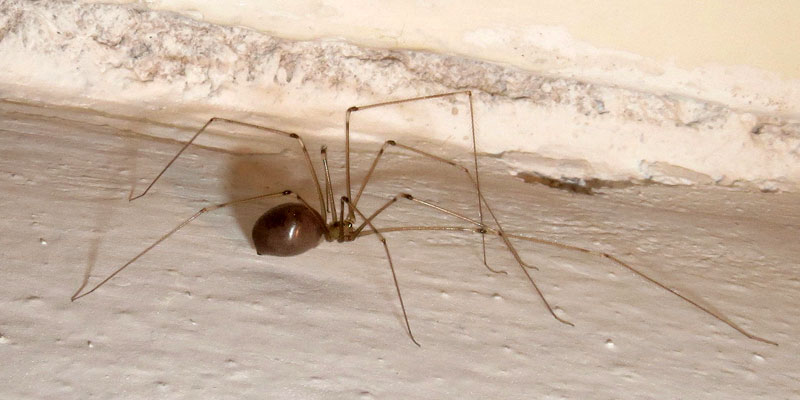
Will the natural buy spray kill the egg